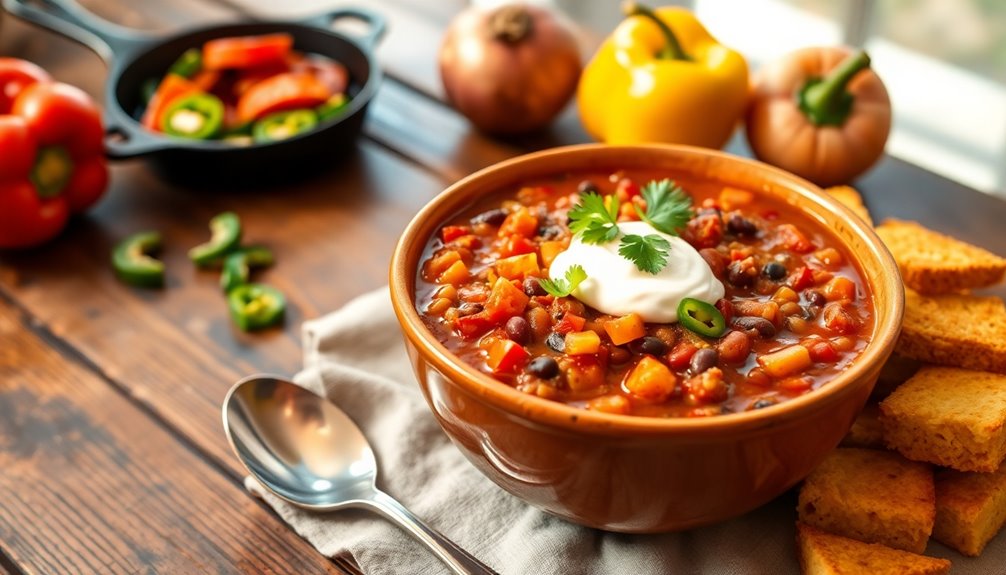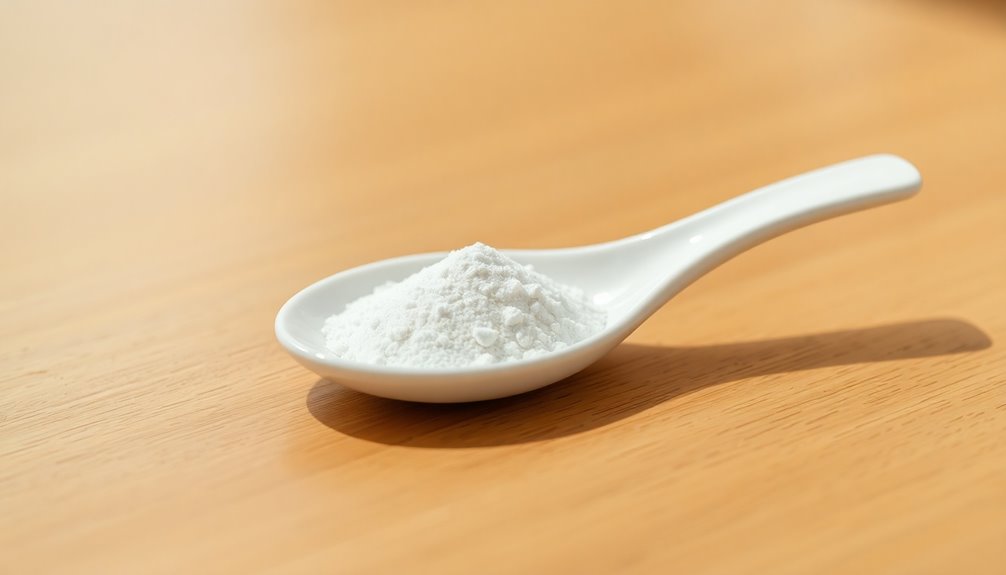A well-crafted pizza dough is like a blank canvas, waiting for your culinary creativity to bring it to life. You might think it's just flour and water, but the right recipe transforms it into something extraordinary. Have you ever wondered how the subtle balance of ingredients can elevate your homemade pizza? As we explore the fundamentals, you'll discover techniques that not only enhance the flavor but also the texture, making all the difference in your next pizza night.
Key Takeaways
- Combine 3 cups of bread flour, 1 packet of active dry yeast, 1 tsp sugar, and 1 tsp salt in a large mixing bowl.
- Gradually add 1 cup of warm water and 2 tbsp of olive oil, stirring until a dough forms.
- Knead the dough on a floured surface for 8-10 minutes until smooth and elastic.
- Allow the dough to rise in a greased bowl, covered, in a warm environment for 1-2 hours.
- Preheat the oven to 475°F and shape the risen dough before baking for optimal results.
History
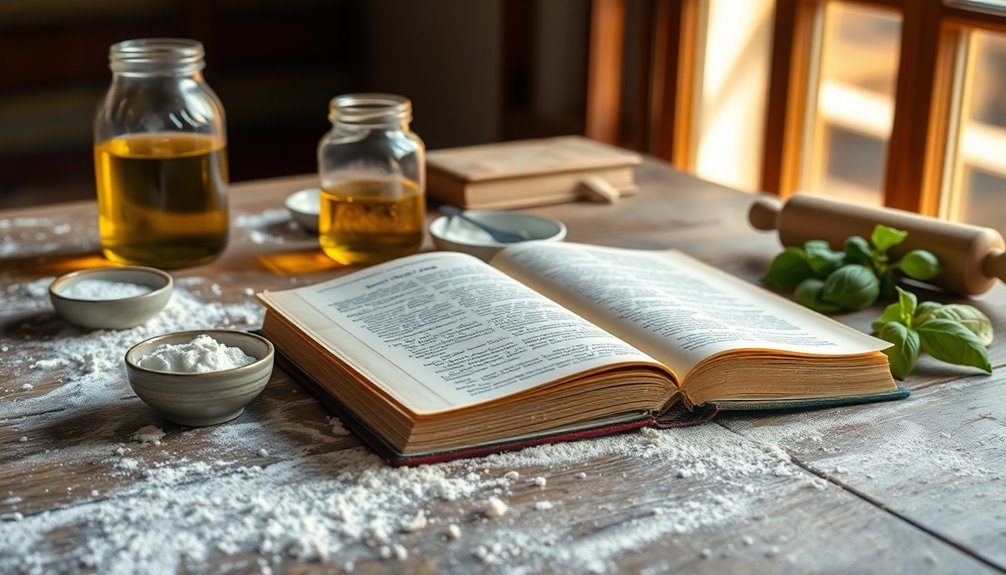
The history of pizza dough is as rich and diverse as the many toppings we enjoy today. Early forms of flatbreads were consumed by Egyptians, Greeks, and Romans, who topped them with various ingredients.
However, it was in Naples, Italy, during the late 19th century that modern pizza took shape, culminating in the classic Margherita pizza crafted to honor Queen Margherita of Savoy. Traditional Neapolitan pizza dough relies on just four simple ingredients: flour, water, salt, and yeast, highlighting the importance of quality.
As pizza spread to the United States, regional variations emerged, like Chicago's thick, chewy crust and New York's thin, crispy style. This evolution reflects the dough's adaptability and the global love for pizza.
Recipe

Pizza Dough Recipe
Making your own pizza dough at home is a rewarding experience that allows you to customize your pizza to your taste. The key to a perfect pizza crust lies in the combination of quality ingredients and proper technique. This recipe yields enough dough for two 12-inch pizzas, making it perfect for a family dinner or a gathering with friends.
The dough is simple to prepare and can be enhanced with various toppings, allowing you to create your ideal pizza masterpiece. To get started, gather your ingredients and prepare to create a delicious, homemade pizza dough. The process includes mixing the dry and wet ingredients, allowing the dough to rise, and then shaping it for baking. With just a little bit of time and effort, you'll have a tasty base ready to be adorned with your favorite toppings.
Ingredients:
- 3 cups bread flour
- 1 packet (2 ¼ tsp) active dry yeast
- 1 tsp sugar
- 1 tsp salt
- 2 tbsp olive oil
- 1 cup warm water (about 110°F)
Instructions:
In a large bowl, combine the flour, yeast, sugar, and salt, mixing well. Create a well in the center and pour in the warm water and olive oil. Stir until a cohesive dough forms.
Transfer the dough to a floured surface and knead it gently for about 5 minutes until smooth. Shape the dough into a ball and place it in a lightly oiled bowl, covering it with a damp cloth. Let it rise in a warm place for approximately 30 minutes or until doubled in size.
After rising, knead the dough briefly again, then let it rest for another 10 minutes before rolling or stretching it out to fit your pizza pan.
Extra Tips:
For best results, use bread flour instead of all-purpose flour to achieve a crispier crust.
Be sure to preheat your oven to 475°F to create a hot environment for baking, which helps the crust cook evenly and develop a golden brown color.
Experiment with different toppings and sauces to find your perfect flavor combination. Also, consider using a pizza stone for a more authentic pizza experience – it helps retain heat and gives the crust a nice texture.
Enjoy your pizza-making adventure!
Cooking Steps
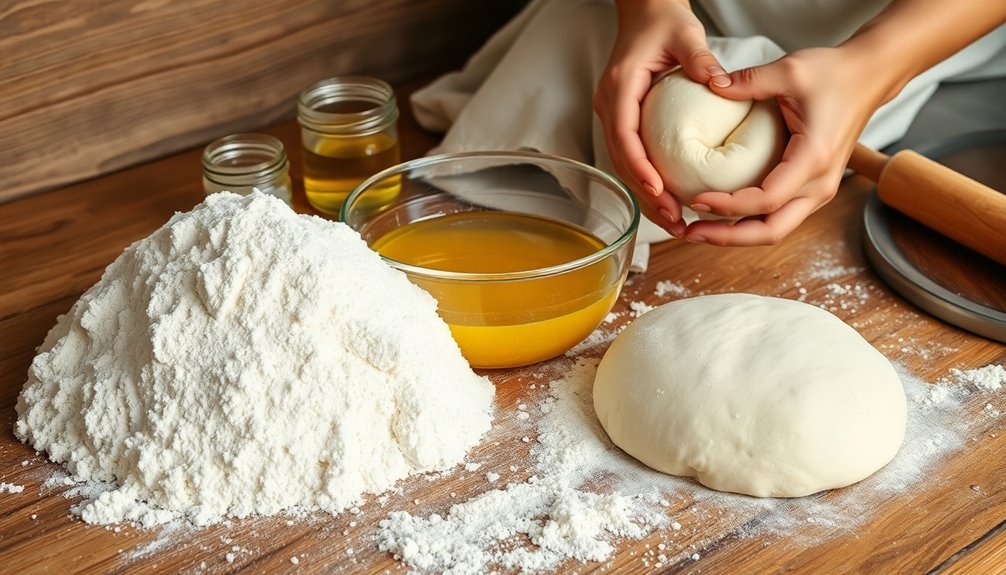
Now that you've got your ingredients ready, let's get started on the cooking steps.
First, you'll mix the flour and water to create a dough, then knead it until it's smooth and elastic.
After that, let the dough rise for about an hour before shaping it into balls for your pizzas.
Step 1. Mix Flour and Water
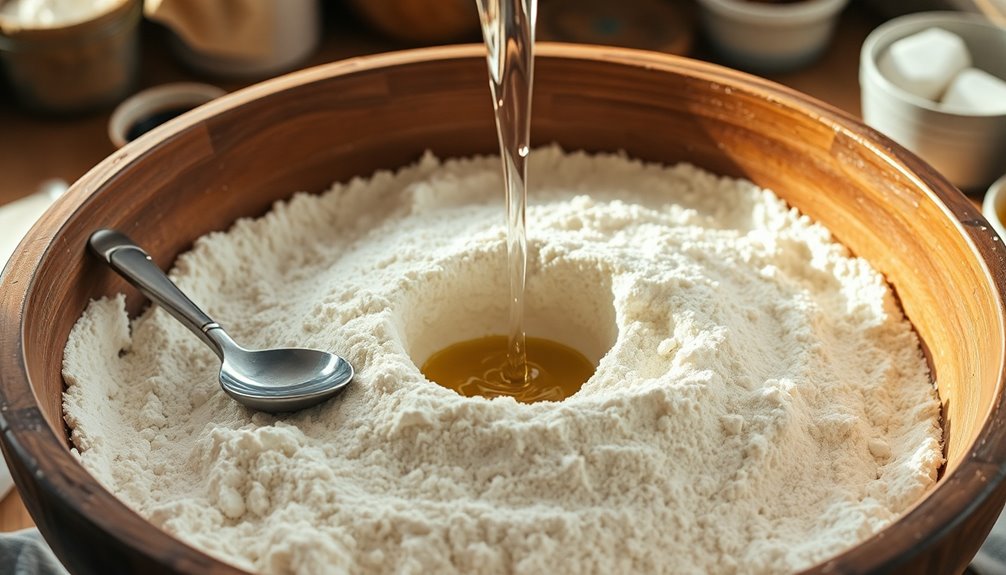
Start by combining flour, salt, and sugar in a large mixing bowl to create a uniform dry mixture.
Gradually pour in warm water (between 100-110°F) and a splash of olive oil, stirring as you go. This ensures even incorporation of the ingredients.
Keep mixing until the dough starts to come together, forming a cohesive ball. If it feels too sticky or dry, adjust with a little more flour or water until you reach the right consistency.
Once combined, it's time to knead the dough briefly on a floured surface to develop gluten, which gives it that chewy texture.
After kneading, place the dough in a greased bowl, cover it with a damp cloth, and let it rise for about 1-2 hours until it's doubled in size.
Step 2. Knead Until Smooth and Elastic

Kneading the dough is crucial for achieving that perfect texture. Start by placing your dough on a floured surface and knead it for about 8-10 minutes.
Apply consistent pressure to develop the gluten, ensuring the dough becomes smooth and elastic. If you find the dough too sticky, gradually add small amounts of flour until you reach the desired consistency.
During the kneading process, the dough should spring back when poked, signaling it's ready. Once it has the right texture, shape your kneaded dough into a ball and lightly coat it with olive oil.
Finally, place it in a greased bowl, setting the stage for the next step in your pizza-making journey.
Step 3. Let Dough Rise for 1 Hour

After you've kneaded the dough to a smooth, elastic texture, it's time to let it rise.
Place the dough in a greased bowl and cover it with a damp cloth to prevent drying out during this resting period. The ideal rising temperature is between 75-80°F, so try to find a warm environment, like a sunny countertop or a slightly warmed oven with the door ajar.
Let the dough rise for 1 hour, during which it should double in size. If it hasn't risen sufficiently after this time, you can leave it longer.
Once it has risen, you'll gently punch down the dough to release air bubbles, preparing it for the next step: shaping the dough.
Step 4. Punch Down the Dough

Gently punch down the risen dough with your fist, releasing the air bubbles that have formed during fermentation. This crucial step in punching down the dough helps redistribute the yeast, promoting an evenly textured crust.
After the dough has doubled in size, let it rest for 10-15 minutes. This gluten relaxation allows for easier shaping later on.
Once rested, turn the dough out onto a lightly floured surface to prevent sticking during the shaping process.
Punching down the dough is essential for achieving that light and airy pizza crust you're aiming for, avoiding any overly dense texture.
Step 5. Shape the Dough Into Balls
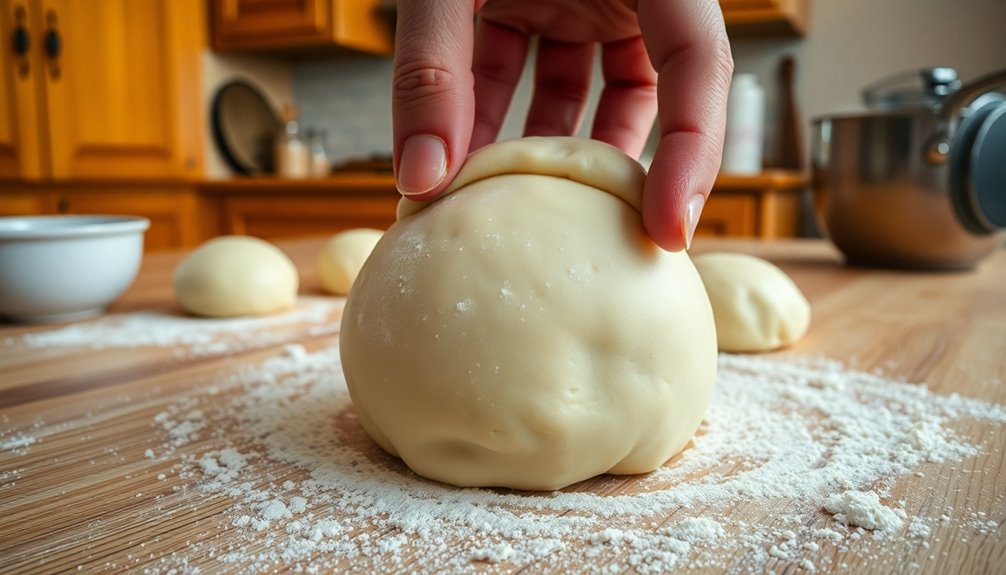
Once the dough has rested, it's time to shape it into balls. Start by gently punching down the risen dough to release excess air.
Then, divide it into equal portions, aiming for two dough balls if you're making 14-inch pizzas. Lightly flour your hands and the work surface to prevent sticking.
Roll each piece of dough between your palms to form a smooth ball, pinching the edges to secure the shape. After shaping, let the dough balls rest for 10-15 minutes, covered with a damp cloth.
This resting period helps relax the gluten, making stretching easier later on. When you're ready, gently flatten each ball with your fingers before stretching it to your desired pizza shape or thickness.
Final Thoughts

As you dive into making your own pizza dough, you'll discover how rewarding and straightforward the process can be.
With just six basic ingredients, you can whip up the best pizza dough recipe in about 1 hour and 30 minutes, yielding enough for two 14-inch pizza crusts.
Experimenting with using bread flour gives you a crisper crust, while all-purpose flour offers a softer texture.
Letting the dough rise in the refrigerator enhances its flavor, and you can easily store it there for up to 3 days or freeze homemade pizza dough for up to 3 months.
This easy pizza dough recipe is versatile, perfect for creating calzones or flatbreads, ensuring you always have a delicious base for your next meal.

